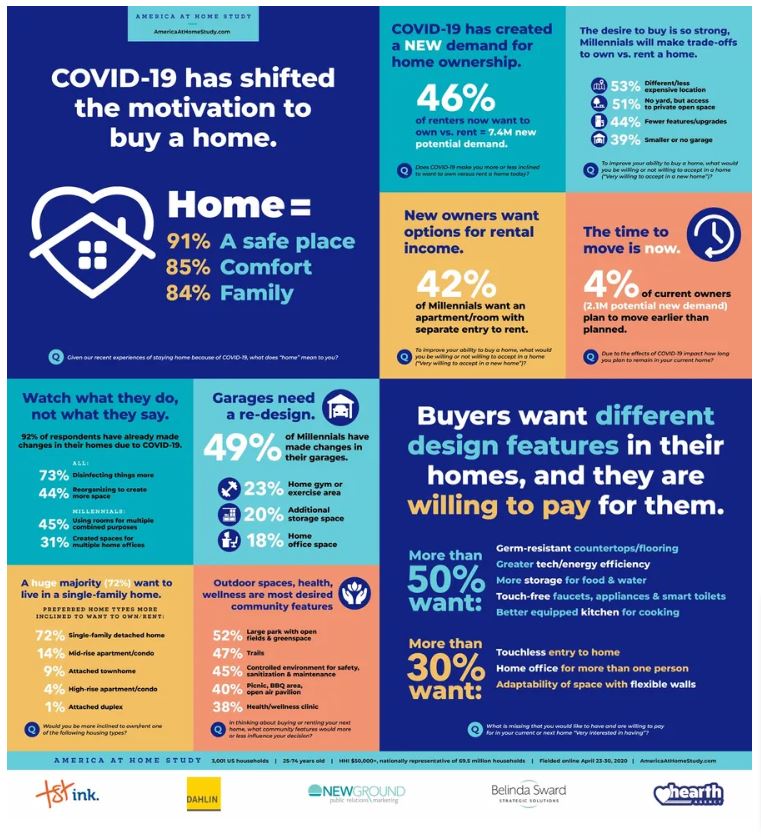My good friend Nancy Keenan was featured in this Forbes article – an excerpt:
Conducted from April 23 to April 30, the America at Home Study compared responses from 3,001 consumers 25 to 74 years old with household incomes of $50,000-plus; 77% were homeowners, 20% were renters, and 3% live with relatives or friends. At the time the survey was conducted, nearly half (48%) of the respondents or another household member had lost a job or income as a result of COVID-19.
Not surprisingly, the survey team discovered that the popular open concept floorplan is problematic when one room has to have multiple purposes. For one thing, there’s the issue of noise and distraction with so many occupants working and schooling at home. “The challenge as we begin the recovery phase is to dig into what consumers say is missing from their current living space and what they are willing to pay for in their next home,” Slavik-Tsuyuki says.
When asked what they thought the word “home” meant, 91% of respondents said, “a safe place.” Safety as a category encompasses many things such as “hygiene, health and wellness, and flexibility of space,” Slavik-Tsuyuki says.
More than half of respondents said they want germ-resistant counters and flooring; greater technology; energy efficiency; more storage, specifically for food and water; touch-free appliances, faucets and toilets; a better equipped kitchen for cooking.
More than 30% want touchless home entry; home offices to accommodate more than one person; flexible walls to create adaptable space.
Keenan of the Dahlin Group points out that since the 1850s, health crises have changed the way we live. With cholera and Tuberculosis a fear, many cities improved water quality standards, and an acceptance of fresh air to combat disease, meant more homes were built with porches and better ventilation. After the Spanish Flu, built-in tubs became the norm as they were easier to clean than claw foot tubs, and lacquered toilet seats replaced wooden ones; powder rooms near a home’s entry provided a place for visitors to clean their hands. After this pandemic it will be no different.
Keenan says that many of the changes that consumers want can take place immediately and that builders are already refreshing their home designs. She mentions drop zones for clean package delivery, more storage, flexible spaces for home offices, better technology and energy efficiency, connection to the outdoors, full baths in mudrooms, multi-use garages, the potential for movable wall systems and multiple office spaces.
Link to Forbes article





0 Comments